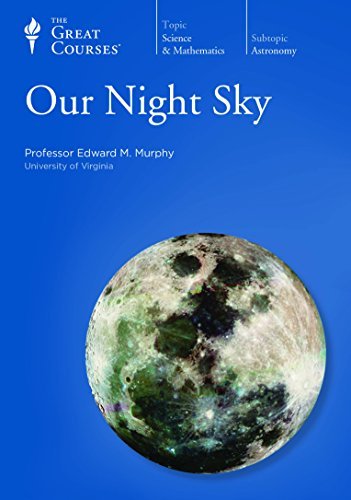Our night sky by professor edward m murphy
For thousands of years, the star-filled sky has been a source of wonder, discovery, entertainment, and instruction. Ancient people from nearly every continent and culture wove exciting stories about the mythological figures they saw in the heavens. People also used the sun, moon, and stars for time-keeping and navigation. And careful observers throughout Europe, the Middle East, Asia, and elsewhere kept precise astronomical records, eventually paving the way for the Scientific Revolution and its remarkable discoveries about the nature of the universe. Even today, watching the sky has not lost its fascination. Equipped only with a pair of eyes or, at most, binoculars and a small telescope, you can behold marvels such as these:
The jewel-like star cluster called the Pleiades in the constellation Taurus, easily visible with the naked eye and even more magnificent through a pair of binoculars
The broad band of the Milky Way arching across the summer sky; the band is the plane of our galaxy seen edge-on from the inside
The Perseid meteor shower, a celestial display that peaks in mid-August of every year when Earth passes through debris from Comet Swift-Tuttle
The cratered face of the moon, stark evidence of the violent era after the birth of the solar system—a record almost completely erased from Earth due to weathering
The four Galilean moons of Jupiter, named after Galileo, whose discovery of them in 1610 helped overthrow the geocentric model of the universe
A total solar eclipse, an awe-inspiring spectacle that occurs somewhere on Earth roughly every 18 months and is well worth traveling thousands of miles to see
Best of all, the endlessly interesting sky is just overhead wherever you are. All you need to feel at home in its limitless expanse is Our Night Sky, a richly illustrated 12-lecture course that gives you an unrivaled tour around the sky while teaching you about the science, culture, technology, and pure pleasure of stargazing. Our Night Sky focuses on the view from the Northern Hemisphere, reflecting the origins of the most familiar constellations in this region. However, the final lecture completes your tour by covering the most notable sights in the Southern Hemisphere.
View the Riches of the Universe from Your Own Backyard
From asteroids to the zodiac, from the Big Dipper to variable stars, Our Night Sky is designed to provide a comprehensive overview of what there is to see and the best way to see it, whether you live in the city or the country, whether you are a novice observer or an old hand at astronomy who needs a refresher on constellation and star names, locations, lore, and what to expect from season to season as the heavens present a gloriously changing panorama. Under the guidance of award-winning astronomer and Professor Edward M. Murphy of the University of Virginia, you will learn
how to use a planisphere (star finder) or other star map to quickly orient yourself to the sky for any given date and time, and how to use these aids to find your way among the constellations;
how to read celestial coordinates to locate objects precisely, and how to find the north or south celestial poles, the celestial equator, the ecliptic (the sun's apparent path during a year), the vernal equinox, and other important landmarks;
how to appreciate the deep cultural roots of astronomy, which lie in humankind's universal quest to understand the heavens through vivid stories that have never lost their power and charm;
how to enhance your observing experience by selecting the right equipment from a bewildering array of choices in binoculars, telescopes, eyepieces, mounts, and other hardware; and
how to decipher the science behind planets, stars, and galaxies by learning the fundamentals of solar system structure, star types, stellar life cycles, galaxy classification, and other information that will enrich your observing.
Above all, you will better appreciate how our view from Earth reflects a hidden order—a structure that was discovered by sky observers long ago, who drew on centuries of observations to put together the picture we now learn from textbooks. As you watch the sky appear to rotate around the celestial pole over the course of a night, you will almost feel Earth turning beneath you, as it in fact does. As you look at a phase of the moon, you will automatically envision the relative positions of the sun, moon, and Earth that produce this view. As you observe the constellations slowly shift as you go out at the same time every night, you will know that you are seeing the effect of Earth's revolution around the sun. In short, you will gain a truly cosmic perspective on our world. Equipped with this outlook, and with the extensive science, history, mythology, observing tips, and other background provided by Professor Murphy, you will be ready to step outside, look up, and become a space traveler from your own backyard.
The Night Sky Planisphere is Included with This Course! Along with this course you will receive the same Night Sky Planisphere Star Chart used by Professor Murphy throughout his lectures. This sturdy, easy-to-use star finder is an invaluable aid for locating major constellations and stars visible in the Northern Hemisphere.-Professor Edward M. Murphy

